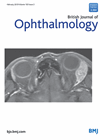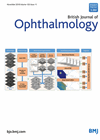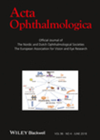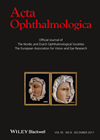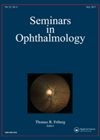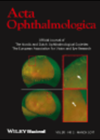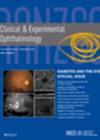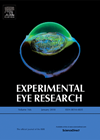
Journal Reviews
Diclofenac versus Bromfenac after cataract surgery
Non-steroidal anti-inflammatory drugs (NSAIDs) are commonly used after cataract surgery to reduce inflammation and cystoid macular oedema (CMO). Diclofenac 0.1% is used three to five times daily for 28 days and Bromfenac 0.09% twice daily for 14 days postoperatively. The...
Temporal versus nasal clear corneal incisions
This is a prospective randomised study of 100 patients’ left eye having undergone phacoemulsification either by a 2.4mm nasal clear corneal incision (CCI) group or temporal CCI group. The corneal astigmatic changes were compared between groups by power vector analysis,...
Effect of phacoemulsification on facility of outflow
This is a prospective study to examine the change in electronic Schotz tonographic outflow (TOF) and IOP measurements after phacoemulsification. Intraocular pressure was measured using Goldman‘s applanation tonography (GAT). Data were collected at baseline, three, six and 12 months postoperatively....
Should intravitreal steroids be used in the initial treatment of post-op endophthalmitis?
Endophthalmitis following cataract surgery is one of the most feared complications, and can have significant impact on the visual outcomes of patients. The role of steroids in the management of endopthalmitis is controversial. The aim of this paper was to...
Cataract in patients with pseudoexfoliation syndrome
The authors present a prospective comparative study in 43 patients with (group 1) or without (group 2) pseudoexfoliation (PXF) undergoing cataract surgery. Anterior capsule samples were obtained in all patients and analysed for signs of apoptosis by using special staining...
Optical quality difference between monofocal and multifocal intraocular lenses
It is well known that multifocal intraocular lenses (IOLs) can generate more than one focus to restore distance and near vision, but patients may experience adverse optical phenomena such as decreased contrast sensitivity and induced glare or halos. The authors...
Intraocular surgical training – is there any inter-procedural transfer of skills?
Cataract surgery is the most commonly performed surgery during ophthalmology training. This study aims to investigate how experience in simulated cataract surgery impacts and transfers to the learning curves for novices in vitreoretinal surgery. Twelve ophthalmology residents without previous experience...
Biomechanical stabilisation of ocular measurements post cataract surgery
This prospective study looks into the time duration of biomechanical stabilisation post uneventful cataract surgery in a case series of 62 consecutive eyes in patients with no ocular or systemic comorbidity. The patients were followed-up at fixed intervals of one...
Impact on the corneal and anterior chamber characteristics after femtosecond laser cataract surgery
Femtosecond laser cataract surgery (FLACS) is being increasingly used in the preparation for cataract surgery. Benefits of circular capsulorrhexis and reduced phacoemulsification energy have been shown in the literature. This study was designed to assess the anterior chamber characteristics and...
Outcomes of cataract surgery in eyes with weak zonules
Pseudoexfoliation (PEX) and zonular weakness have long been known to increase the risk of complication of cataract surgery. This retrospective study looks at the results of phacoemulsion and intraocular implantation in 295 eyes with pseudoexfoliation and zonular weakness, with a...
Intravitreal bevacizumab vs. triamcinolone in patients with DMO at the time of cataract surgery
This prospective, single masked randomised control trial (RCT) compared visual and anatomical outcomes when either intravitreal bevacizumab (BVB) or triamcinolone (TA) was administered at the time of cataract surgery and at subsequent review, if required, in patients with diabetic macula...
MicroRNAs in cataract
In an ageing population cataract formation is one of the leading causes of blindness. Cataracts are caused by a failure to clear accumulating aggregated proteins in the lens. MicroRNAs are small non-coding transcripts which bind to specific mRNAs acting at...


